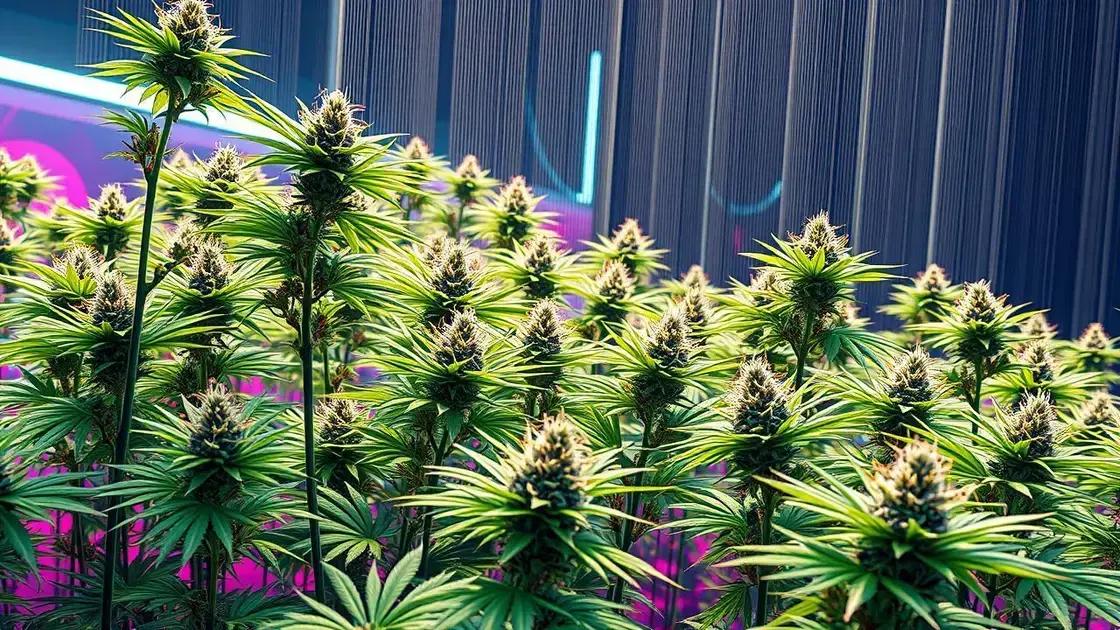How to Care for Marijuana Plants During Flowering: 7 Essential Tips
How to care for marijuana plants during flowering is an essential topic for growers who want lush, productive plants. The flowering stage is where your marijuana plants will show their true potential, showcasing vibrant buds and leaves. Cultivating the perfect environment involves understanding the right techniques for watering, nutrition, and pest management. This guide will unravel the mysteries of nurturing your plants during this critical phase.
Table of Contents
ToggleUnderstanding marijuana flowering stages for optimal growth
How to care for marijuana plants during flowering is crucial for achieving optimal growth. Understanding the various stages of marijuana flowering can significantly impact your yield and quality. As plants transition through these stages, each requires different care techniques to ensure healthy development.
Key flowering stages of marijuana plants
- Pre-flower stage: This is the initial phase where the plant shows its sex. Identifying male and female plants is vital.
- Flowering stage: This phase is characterized by the development of buds. It usually begins when the light cycle changes to 12 hours of light and 12 hours of darkness.
- Late flowering stage: This stage occurs just before harvest when the buds are fully developed, and the trichomes start to change color.
Importance of proper care during each stage
- Watering: Ensure consistent moisture levels but avoid overwatering, which can lead to root rot.
- Nutrition: During the flowering phase, marijuana plants benefit from phosphorus and potassium-rich nutrients. For detailed nutrient needs, check out this exploring indoor gardening techniques.
- Light exposure: Proper lighting (typically 12/12 for flowering) is crucial for encouraging bud production.
- Environmental conditions: Maintain optimal temperature and humidity levels throughout the flowering stages.
Real-world example of successful flowering management
For instance, a grower may notice stunted growth during the early flowering stage due to inadequate light. By switching to a more suitable full-spectrum light and adjusting the nutrient regimen, the grower can help the plants reach their full potential before the late flowering stage.
Conclusion
Understanding marijuana flowering stages is essential for maximizing growth and yield. With the right care techniques and environmental management, growers can significantly enhance their plants’ health and productivity during the flowering phase.
Essential nutrients for thriving marijuana plants during flowering

Essential nutrients for thriving marijuana plants during flowering are critical for maximizing yield and quality. During the flowering phase, plants require specific nutrients to develop robust buds and healthy foliage. Providing the right nutrients not only supports growth but also enhances the overall flavor and potency of the cannabis.
Key nutrients for flowering marijuana plants
- Phosphorus: Essential for root development and flower production, phosphorus encourages blooming. It is crucial during the flowering stage.
- Potassium: This nutrient helps regulate water uptake and is vital for flowering and fruiting, contributing to larger, denser buds.
- Nitrogen: While typically reduced during flowering, nitrogen supports vegetative growth early in the cycle. Ensure balanced levels throughout flowering.
- Calcium: Important for cell wall structure and growth, calcium prevents deficiencies and improves overall plant health.
- Magnesium: This secondary nutrient aids in chlorophyll production and enzyme function, supporting photosynthesis.
Nutrient application strategies
- Balanced NPK ratio: Choose fertilizers with appropriate nitrogen (N), phosphorus (P), and potassium (K) ratios, typically skewed towards higher P and K during flowering.
- Supplement with micronutrients: Consider adding trace elements like iron and zinc to support overall health.
- Scheduled feeding: Implement a feeding schedule based on the strain and growth stage, adjusting as necessary to prevent over-fertilization.
Real-life example of nutrient management
For instance, a grower using a phosphorus-rich fertilizer noted a marked improvement in bud size and density after adjusting the nutrient mix just before the transition to the flowering phase. This adaptation resulted in a significantly enhanced yield at harvest time. For more in-depth information, be sure to check out this exploring indoor gardening techniques.
Conclusion
Understanding essential nutrients is vital for the health and productivity of your marijuana plants during flowering. By ensuring proper nutrient balance and application, you can maximize your plants’ potential and enjoy a bountiful harvest.
Managing environmental factors for healthy flowering cannabis
Managing environmental factors for healthy flowering cannabis is crucial for maximizing plant health and yield. Environmental conditions, such as temperature, humidity, and light exposure, play significant roles during the flowering phase. Properly managing these factors ensures your cannabis plants thrive and produce dense, high-quality buds.
Key environmental factors to monitor
- Temperature: Ideal temperatures during the day range from 70°F to 80°F (21°C to 27°C) and drop slightly at night.
- Humidity: Maintaining humidity levels around 40-50% during the flowering stage helps prevent mold and encourages proper bud development.
- Light quality and duration: Providing 12-14 hours of light daily is essential for triggering and sustaining the flowering process. Full-spectrum lights are optimal.
- Air circulation: Good airflow prevents heat buildup and helps strengthen stems. Use fans to promote fresh air exchange.
Strategies for managing environmental factors
- Use thermometers and hygrometers: Regularly monitor temperature and humidity to keep readings within the optimal range.
- Adjust lighting: Dimmer switches or smart grow lights can help fine-tune light intensity and duration.
- Implement ventilation systems: Set up exhaust fans and intake vents to maintain airflow and temperature stability.
Real-life example of effective environmental management
A grower experienced significant bud rot due to high humidity levels after a rainstorm. By promptly installing a dehumidifier and improving ventilation, they were able to stabilize conditions, leading to a successful harvest. If you’re discovering strategies for optimizing environmental factors, consider exploring indoor gardening techniques to further enhance your growing conditions.
Conclusion
Successfully managing environmental factors during the flowering phase can greatly impact the health and yield of cannabis plants. By keeping close tabs on these elements, growers can ensure optimal conditions for impressive harvests.
In conclusion
How to care for marijuana plants during flowering encompasses a variety of essential practices that impact the overall health and yield of your plants. Understanding the critical stages of flowering, providing essential nutrients, and managing environmental factors are key components to achieving a successful harvest. By optimizing these elements, you can enhance the quality and potency of your cannabis. For further insights and tips on enhancing your indoor garden, continue to explore and educate yourself in this rewarding journey.

